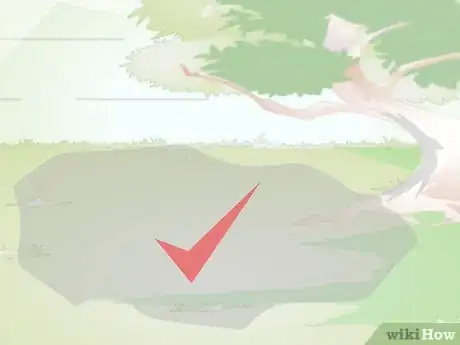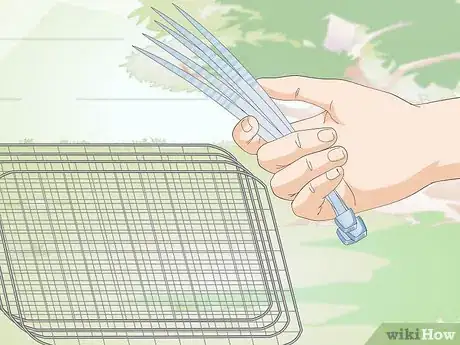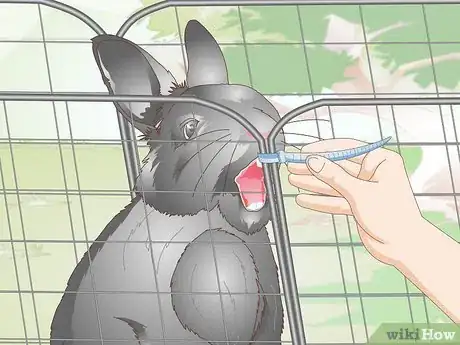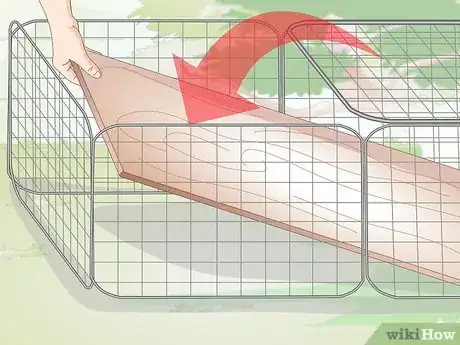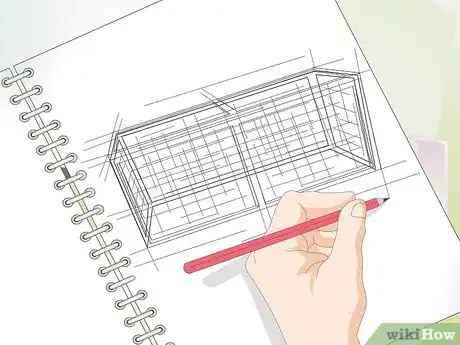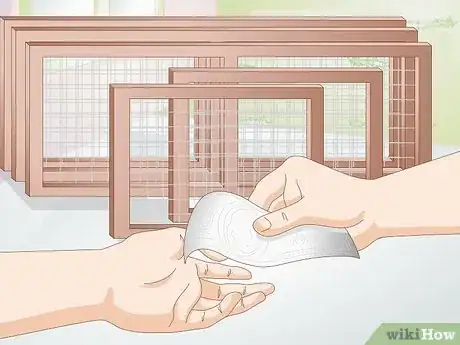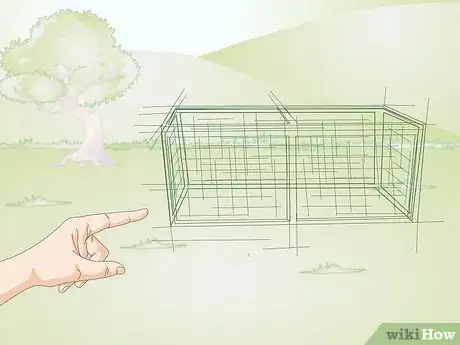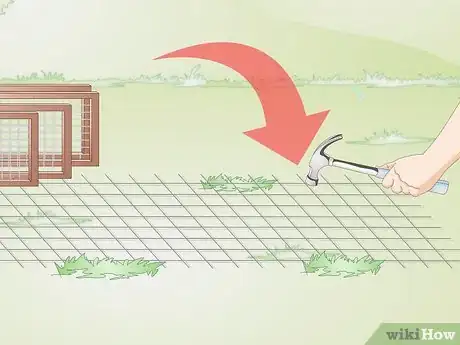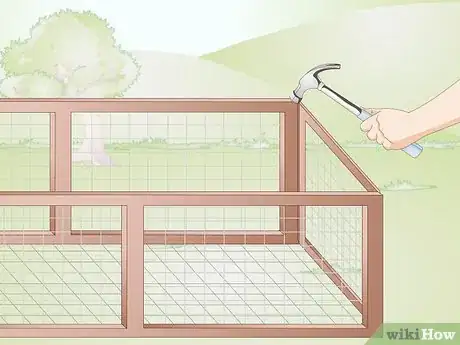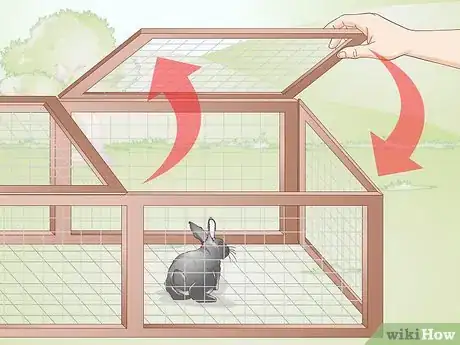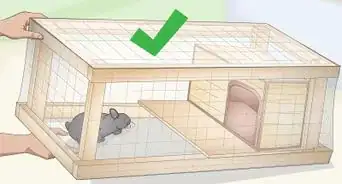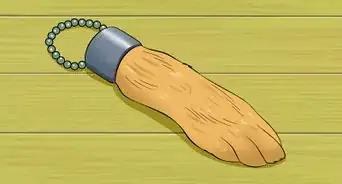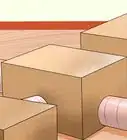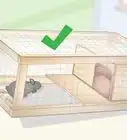This article was co-authored by Pippa Elliott, MRCVS. Dr. Elliott, BVMS, MRCVS is a veterinarian with over 30 years of experience in veterinary surgery and companion animal practice. She graduated from the University of Glasgow in 1987 with a degree in veterinary medicine and surgery. She has worked at the same animal clinic in her hometown for over 20 years.
There are 8 references cited in this article, which can be found at the bottom of the page.
wikiHow marks an article as reader-approved once it receives enough positive feedback. In this case, 87% of readers who voted found the article helpful, earning it our reader-approved status.
This article has been viewed 107,237 times.
Building a rabbit run is not that difficult, especially if you use pre-built panels. You can create a simple run out of wire panels, or a more complicated one out of aviary panels. The wire run can be used indoors or out, while the aviary panel kind is better outdoors.
Veterinarian Pippa Elliott MRCVS reminds us of the importance of UV light: "Building a run is a great way to get rabbits outside in natural sunlight. Studies show us that indoor rabbits can have low vitamin D levels, which leads to poorer quality bones and teeth. Natural sunlight boosts vitamin D levels and will benefit the rabbit's health."
Steps
Understanding the Need for a Rabbit Run
-
1Know rabbits need to run. Rabbits need a great deal of exercise because they are prey animals; in the wild, they must say in shape to stay alive. They will need to run and jump for at least two to three hours a day.[1]
- If your rabbit has the run of the house, then you don't necessarily need a run unless you feel the need to take your rabbit outside.
-
2Understand the purpose of a run. A run provides a great place for your rabbit to exercise, keeping them contained. However, it also protects them from predators. Runs are enclosed on all sides and the top, so most predators cannot get in.[2]Advertisement
-
3Establish a good size. Any cage that you keep your rabbit in for extended periods of time should be at least 2 feet by 4 feet, at least for medium rabbits or smaller. However, if you can, you should make the run bigger for your rabbit.[3]
-
4Include a hutch. If you plan on leaving your bunnies outside, they also need a shelter, known as a hutch. A run is great for exercise, but a hutch is the bunnies' home.
-
5Always pick a shady location. If you don't have a shady location available to you, you should cover your hutch with more than just wire. You can use anything that will provide shade, even a tarp.[4]
Making a Simple Wire Cage
-
1Gather your materials. You'll need a cage kit, which comes with wire modular pieces. You'll also need some zip ties or hinges or a hammer and nails, available at most home improvement stores.[5]
-
2Attach two pieces together. Place two pieces next to each other. Use two zip ties, one at the top and one at the bottom, to bring the two pieces together. If the pieces aren't very high, you may need to make another layer on top. Use the zip ties to add the top layer as well. You want it to be 3 to 4 feet high.[6]
-
3Continue moving around the pen. Continue adding pieces to the pen, until you have one that is an appropriate size. For instance, if your pieces are 2 feet wide, you'll need at least two pieces on each side and one piece on each end.[7]
-
4Create a door. The easiest way to create a door is to attach one panel only one side. That way, it will swing out, up, or down. You can keep it closed with a clip or clothespin.[8]
-
5Consider replacing the zip ties. You may want to replace the zip ties with a hinge or metal j clips, which are more secure and more visually appealing. The zip ties can be helpful for keeping the cage in place while you work.
- If you leave the zip ties, make sure they are facing outward. Your bunny is likely to chew on anything inside the cage, so point the ends of the zip ties outward. Make sure you pull them tight and clip off any excess.
-
6Build a roof. Use the same pieces to build a roof. Lay the piece on top, and attach on the sides and in the corner. Keep attaching the pieces to each other and the sides until you have a solid roof.[9]
-
7Build a floor for a more permanent run. If you plan on leaving bunnies in this run unsupervised outside, then you need to add wire pieces across the floor, too. Rabbits can burrow out from under the cage.[10] However, you need a more solid floor for your rabbit's feet, so use either wood or a very thick layer of straw on the bottom.[11] Indoors, you can use utility mats to cover the bottom instead of wire, as they won't burrow into your floor.[12]
Making a Rabbit Run Out of Aviary Panels
-
1Design your run first. Aviary panels come in several styles. Basically, they are made with a wood frame and wire. Some are wire all along the side, while other panels have door openings or are solid wood on one end.[13]
- Generally, they are long enough that you can build a pen you can walk into. However, you can also turn them so the length runs along the ground, creating a much shorter pen. For instance, you could use the kind of panels that are solid on one end to create an impromptu hutch for your rabbit.[14]
-
2Buy the appropriate panels. Once you've decided on a design, buy panels to match your design. You should be able to find these at farm and tractor stores or home improvement stores. They were originally designed for birds, which is why farm and tractor stores may have them.[15]
-
3Decide on a location. If you put the aviary panels over concrete, you do not need to build in a mesh floor. However, if you are building it over grass or dirt, you will need to add in wire underneath the grass.
-
4Add wire if needed. Use wire meant to keep gophers out, referred to as "gopher wire." You can lay it out under the cage. You can hammer in ground staples to keep it in place. Normally, this wire would go under the sod, but as that's not usually an option with rabbit hutches, you can add it on top of the grass.[16]
- However, be sure to cover the bottom of the cage with plenty of fresh straw to protect your rabbit's feet and to change the straw out regularly.[17]
- Be sure to push the wire ends into the ground, so no one gets scratched on them.
- You can also put in a wood floor, if you prefer.
-
5Join the panels. You can use screws or nails to join the panels, just as you would any wooden frame. If you use screws, you can take it apart later and make it into a new configuration if you would like.[18] Another simple option is brackets and screws.[19]
- To join using brackets and screws, lay the panels flat on the floor. Make sure they are as close as possible. Lay out 6 brackets along the seam. Use a drill to pre-drill holes where the screws will go. Drill in the screws. For corners, use corner brackets.[20]
-
6Don't forget to use a door. The easiest way to leave a door on your hutch is to use an aviary panel with a door already installed.[21] However, you can also use hinges instead of brackets on one of the panels, so that it swings out. The hinges are installed basically the same way as the brackets; you'll also need to add a latch for your door.
Warnings
- Keeping your rabbit outside all the time can be dangerous, as if a predator approaches, she can literally have a heart attack. Also, if she's the only bunny you have, she'll get lonely by herself, as rabbits are very social.[23]⧼thumbs_response⧽
References
- ↑ http://animals.mom.me/rabbits-run-back-forth-cages-1716.html
- ↑ http://www.rabbit.org/journal/1/rabbit-run.html
- ↑ https://www.aspca.org/pet-care/small-pet-care/general-rabbit-care
- ↑ http://www.rabbit.org/journal/1/rabbit-run.html
- ↑ https://www.youtube.com/watch?v=Fq6bem2BVKQ
- ↑ https://www.youtube.com/watch?v=Fq6bem2BVKQ
- ↑ https://www.youtube.com/watch?v=Fq6bem2BVKQ
- ↑ https://www.youtube.com/watch?v=Fq6bem2BVKQ
- ↑ https://www.youtube.com/watch?v=Fq6bem2BVKQ
- ↑ http://www.therabbithouse.com/outdoor/rabbitrun.asp
- ↑ https://www.aspca.org/pet-care/small-pet-care/general-rabbit-care
- ↑ https://www.aspca.org/pet-care/small-pet-care/general-rabbit-care
- ↑ http://www.therabbithouse.com/outdoor/aviary-panels.asp
- ↑ http://www.therabbithouse.com/outdoor/aviary-panels.asp
- ↑ http://www.therabbithouse.com/outdoor/aviary-panels.asp
- ↑ http://www.gopherslimited.com/gopherwire.html
- ↑ http://www.rabbit.org/journal/1/rabbit-run.html
- ↑ http://www.therabbithouse.com/outdoor/aviary-panels.asp
- ↑ http://www.finchinfo.com/housing/panel_form_aviary_construction.php
- ↑ http://www.finchinfo.com/housing/panel_form_aviary_construction.php
- ↑ http://www.therabbithouse.com/outdoor/aviary-panels.asp
- ↑ https://www.aspca.org/pet-care/small-pet-care/general-rabbit-care
- ↑ https://www.aspca.org/pet-care/small-pet-care/general-rabbit-care
About This Article
To build a simple wire rabbit run, you'll need a cage kit, which is a set with flat wire pieces, as well as some zip ties and hinges from your local home improvement store. When you have your supplies, put the pieces together to make a cage that’s at least 2 feet by 4 feet. The bigger you can make the run, the more your rabbit will enjoy it! When you attach the sides of the cage together, use hinges or metal j clips to make sure it’s secure. Remember to create a door by leaving one panel attached on just one side. You should also lay down pieces for a roof. To prevent your rabbit from burrowing out of this cage, add wire pieces across the bottom and then cover these with wood or a thick layer of straw so it makes a solid floor. For more tips from our Veterinary co-author, including how to make a rabbit run with aviary panels, read on!




